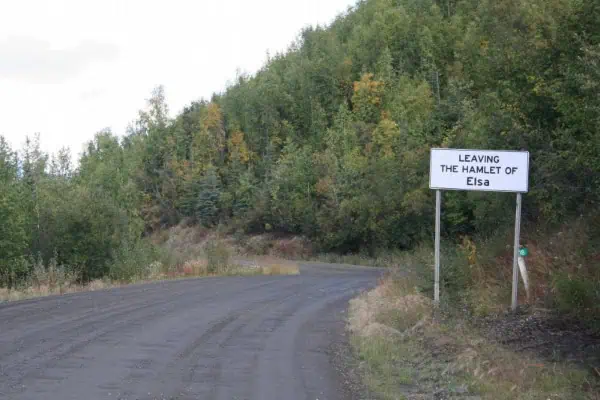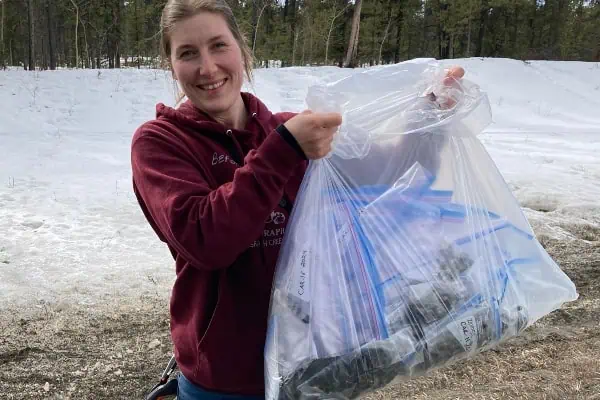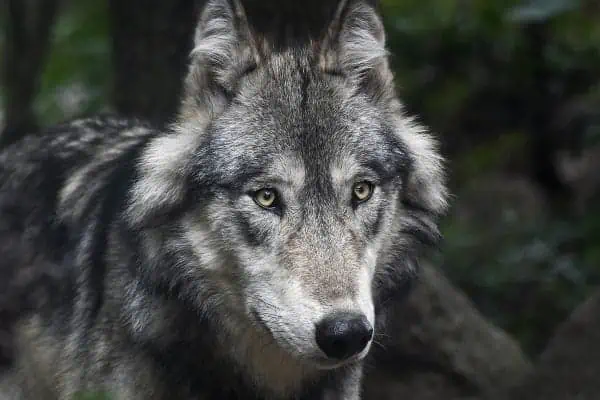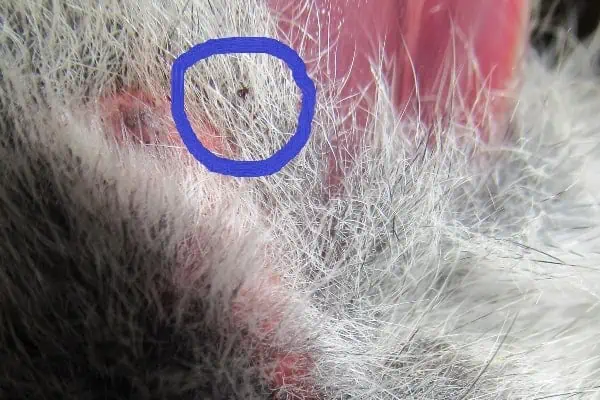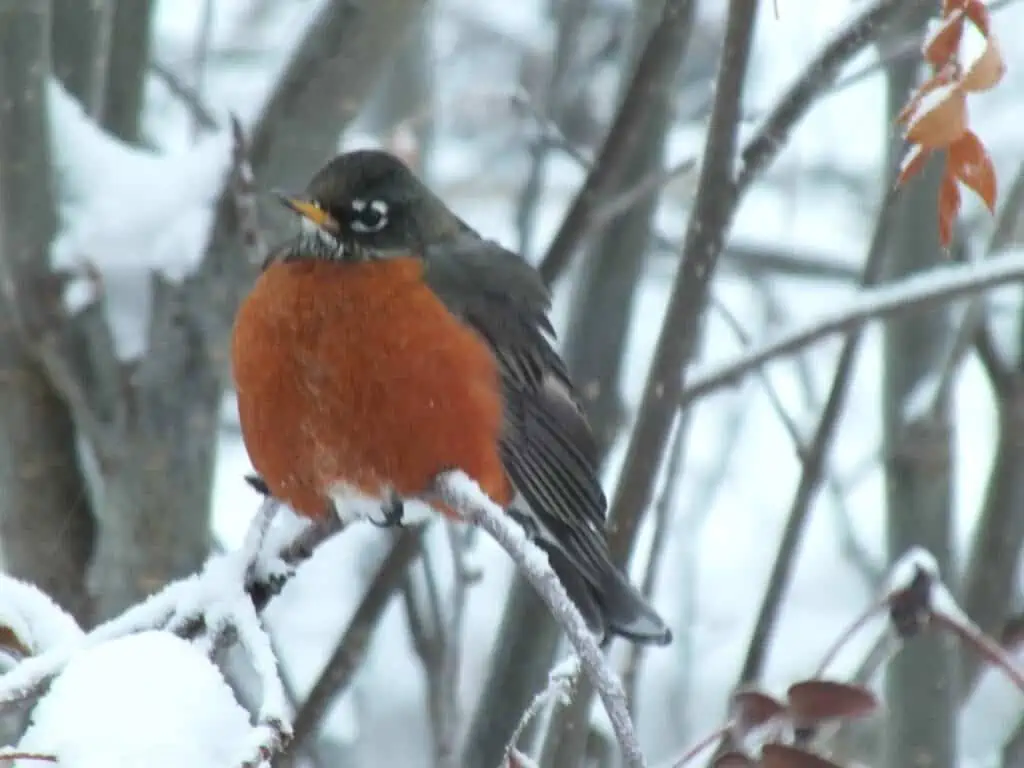
Mary Whitley felt surprise and compassion when she saw a robin perched in a tree in her Hillcrest yard on December 9th. It was -19ºC — and a strange place for a bird that heralds Yukon spring.
Her husband saw it first. “He looked out the window and said, ‘There’s a robin out there!’ And so we both looked out and sure enough, there was a robin and it was very fluffed up and trying to eat mountain ash berries.”
Robins are migratory songbirds that usually depart for the winter. They normally don’t go far – to southern Canada or the United States — but a handful are deciding to not leave at all, says Pam Sinclair, bird conservation biologist with Environment and Climate Change Canada.
“Robins do seem to stay farther north in winter these days, with one to a few usually hanging around Whitehorse for much of the late fall and winter,” she says.
Yukon’s annual Christmas Bird Count shows that since 2009, robins have been sighted almost every winter. The numbers are small – one to three birds — but in 2011, eight robins were spotted. In the most recent Christmas count, one was seen in Whitehorse.
The Yukon Birds Facebook page reported a robin in Atlin on December 30th, eating juniper berries, and another at a bird feeder in Whitehorse’s Mt. Sima subdivision on January 15.
It’s not surprising robins may be adapting to Yukon winters. The pumpkin-breasted bird famous for its cheery spring song and blue eggs is a versatile generalist, happy to hunt on urban lawns and nest amongst humans — on window sills, decks and beached boats — yet also at home in wilderness.
“Robins nest in an amazingly wide variety of treed habitats, from suburbia to the most remote northern taiga, from low elevations to treeline, from north to south and east to west,” says Sinclair.
With climate change, shrubs and trees are spreading north into tundra, reducing nesting spots for some birds but increasing them for robins.
So while many songbirds are in danger, robins — with an estimated 380,000,000 across North America — are one of the most populous and least threatened. This is according to the 2016 North American Landbird Conservation Plan, a collaboration of Canadian and American wildlife agencies that has assessed the status of 450 North American bird species.
Sinclair contrasts the robin’s adaptability to that of the rusty blackbird, a Yukon-based migrator that is in steep decline.
“It’s a specialist in wetlands and it’s actually neophobic – it doesn’t like new things,” she says. “Whereas the robin doesn’t have that problem.”
And while some birds thrive by driving away others, robins are not guilty.
“They’ve done well themselves but not to the detriment of other species.”
For winter sightings, the Whitehorse dam is a prime spot, with year-round open water, Sinclair says.
“They appear to be eating invertebrates near the shore, from among the rocks. Then they go up to the shrubs to roost.”
She says robins can handle some cold as long as they have food. They eat fruit rather than seeds, so to help them through the winter, she suggests raisins or cranberries in feeders.
As for Mary Whitley’s robin, it didn’t get any berries from her tree because the spindly branches drooped too much under the bird’s weight. It eventually flew away.

